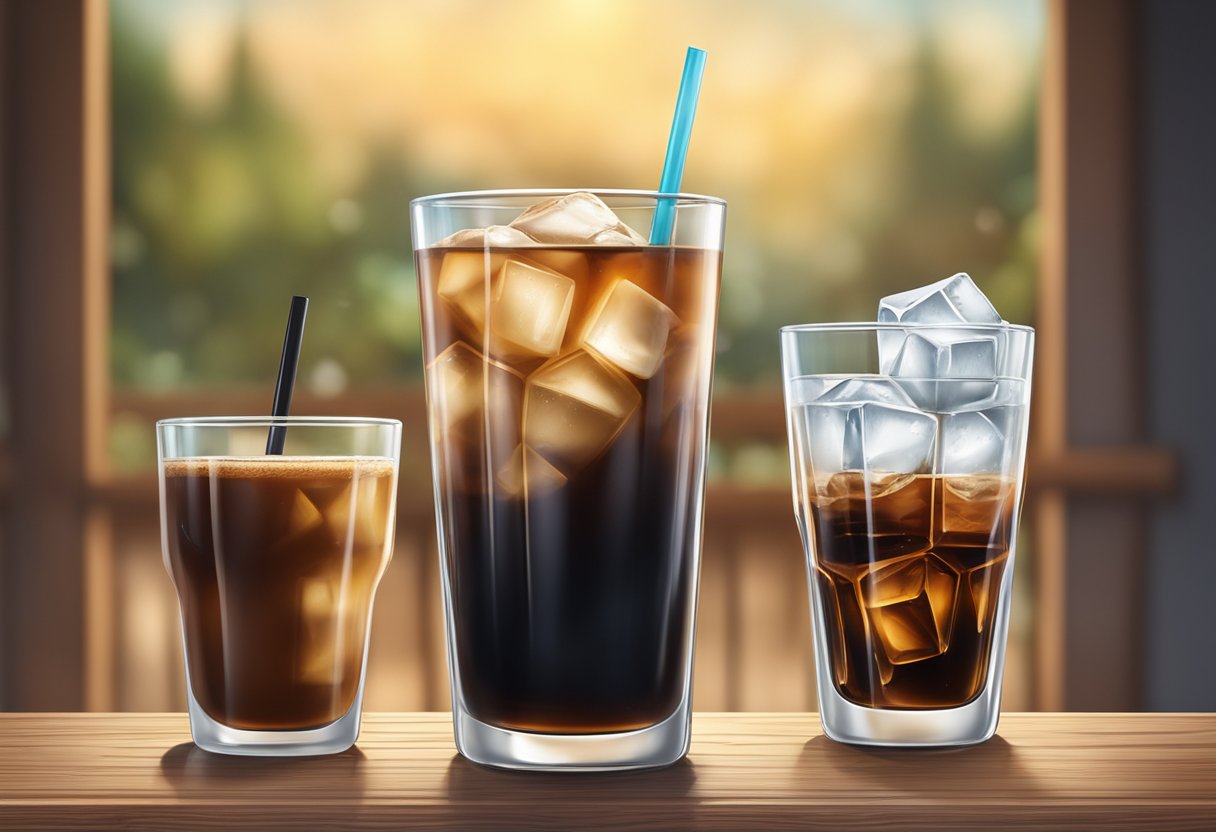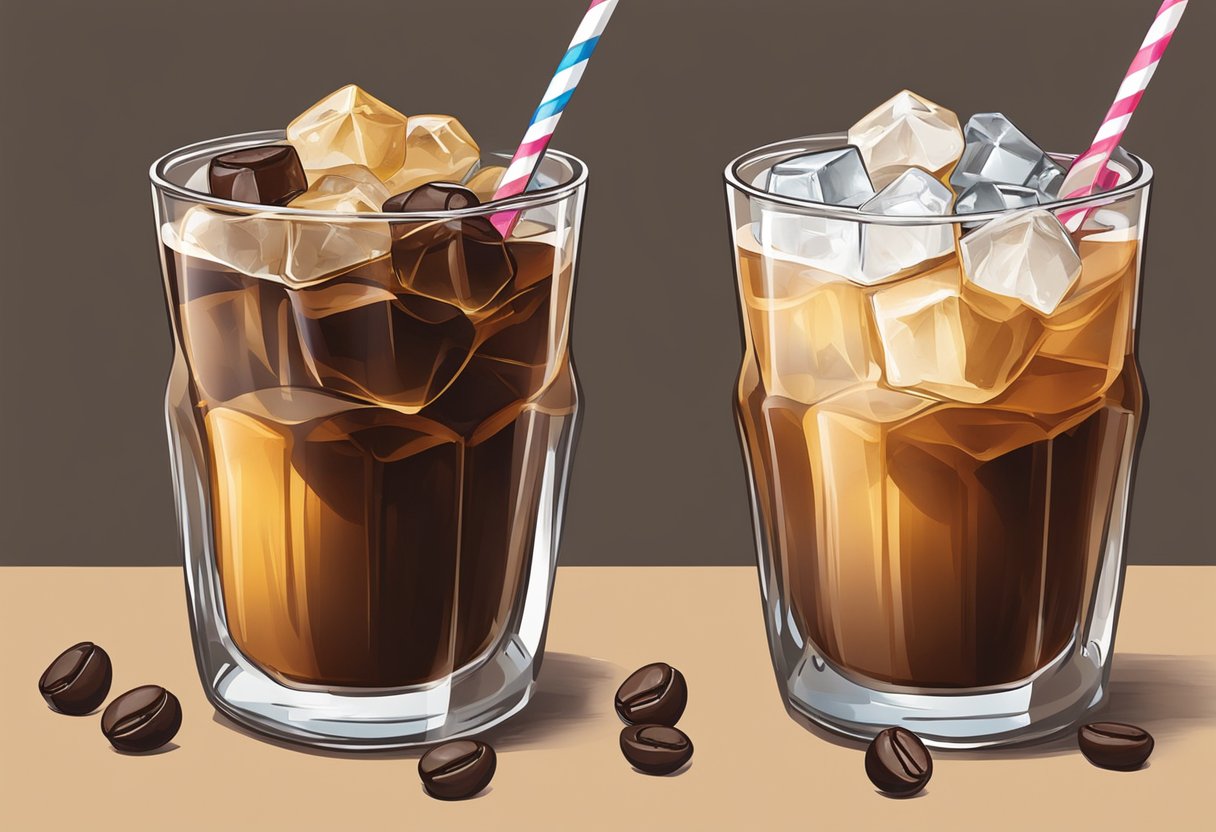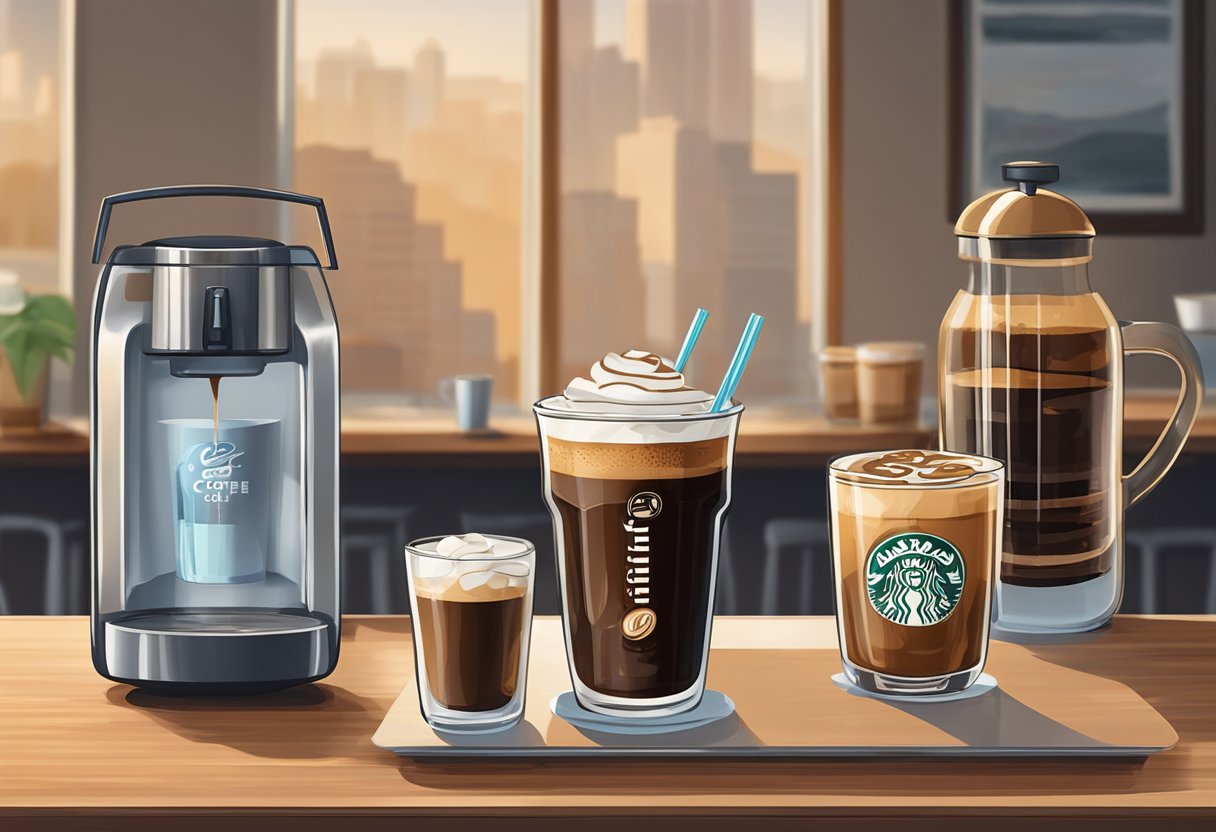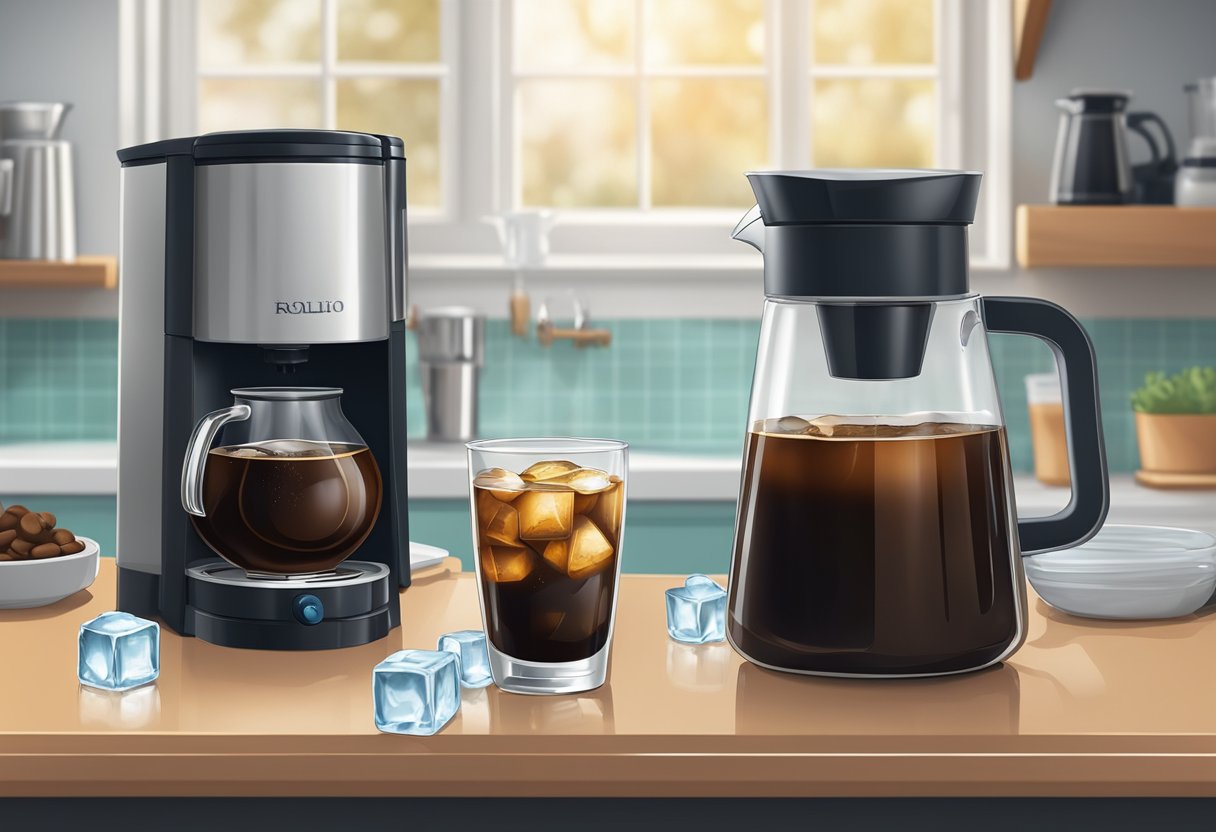1-800-982-4730
1-800-982-4730
Cold brew and iced coffee are two popular coffee drinks that are often confused with each other. While both are served cold and have similar names, they are actually quite different in terms of taste, preparation, and caffeine content. In this article, we will explore the differences between cold brew and iced coffee, specifically in terms of caffeine content.

Cold brew is a type of coffee that is made by steeping coffee grounds in cold water for an extended period of time, usually 12 to 24 hours. This slow extraction process results in a coffee that is less acidic and smoother in taste compared to traditional hot-brewed coffee. Cold brew also tends to have a higher caffeine content than iced coffee, with an average of 200 mg of caffeine per 16-ounce serving.
Iced coffee, on the other hand, is made by brewing coffee with hot water and then cooling it down with ice. This results in a coffee that is more acidic and has a lighter taste compared to cold brew. Iced coffee typically has a lower caffeine content than cold brew, with an average of 165 mg of caffeine per 16-ounce serving. However, the caffeine content can vary depending on the type of coffee beans used and the brewing method.

Cold brew and iced coffee are two popular beverages that differ in their brewing process. Cold brew is made by steeping coarsely ground coffee in cold water for 12 to 24 hours, while iced coffee is brewed hot and then poured over ice. Cold brew is usually made with a higher coffee-to-water ratio and results in a highly concentrated coffee concentrate that can be diluted with water or milk. In contrast, iced coffee is typically brewed with a lower coffee-to-water ratio and quickly cooled down with ice.
Cold brew and iced coffee also differ in their taste profile. Cold brew coffee is less acidic and has a smoother, sweeter taste profile due to the prolonged brewing process. On the other hand, iced coffee has a more bitter and acidic taste profile due to the brewing method. Additionally, cold brew coffee has a thicker texture and a more pronounced flavor profile than iced coffee.
When it comes to caffeine content, cold brew coffee typically has more caffeine than iced coffee. This is because the prolonged brewing process allows more caffeine to be extracted from the coffee beans. A typical 16-ounce cold brew has around 200 milligrams of caffeine, while a 16-ounce iced coffee has around 165 milligrams of caffeine. However, the caffeine content can vary depending on the brewing method, the type of coffee beans used, and the amount of coffee used.
In summary, cold brew and iced coffee are two popular beverages with different brewing processes and taste profiles. Cold brew coffee is made by steeping coarsely ground coffee in cold water for 12 to 24 hours and has a smoother, sweeter taste profile with a higher caffeine content. In contrast, iced coffee is brewed hot and quickly cooled down with ice, resulting in a more acidic and bitter taste profile with a lower caffeine content.

When it comes to coffee varieties and brands, there are many options for both cold brew and iced coffee. Here are a few examples of popular brands and their offerings:
Starbucks is a well-known coffee chain that offers both cold brew and iced coffee options. Their cold brew is made with a blend of African and Latin American beans and has a smooth, chocolatey flavor. Their iced coffee is made with their signature Pike Place Roast and is served with ice.
Customers can customize their drinks by adding milk, sweetener, or creamers. For those watching their calorie intake, Starbucks offers sugar-free syrups and almond milk as alternatives.
Blue Bottle Coffee is a specialty coffee company that offers both cold brew and iced coffee options. Their cold brew is made with their signature Three Africas blend and is steeped for 12 hours. Their iced coffee is made with their Giant Steps blend and is served with ice.
Customers can order their drinks with creamers or milk, and Blue Bottle offers a variety of non-dairy options such as oat milk and almond milk.
For those who prefer to make their own cold brew or iced coffee at home, there are many recipes available online. To make cold brew, one can use a cheesecloth or a French press to steep coarsely ground coffee beans in cold water for 12-24 hours. For iced coffee, one can brew hot coffee and chill it in the fridge before serving.
The National Coffee Association recommends using a ratio of one part coffee to eight parts water for cold brew and one part coffee to two parts water for iced coffee. Customers can add their preferred sweeteners or creamers to their homemade brews.

When it comes to brewing cold brew and iced coffee, there are a few key differences in the equipment and techniques used. In general, cold brew requires a longer brewing time and different equipment than iced coffee.
To make cold brew, coffee grounds are steeped in cold water for 12-24 hours, resulting in a smooth and less acidic flavor. This process requires a cold brew coffee maker or a French press, as the coffee needs to be steeped for an extended period of time. The longer brewing time also means that more caffeine is extracted from the coffee grounds.
On the other hand, iced coffee is typically made using a hot brewing method, where hot water is poured over coffee grounds and then chilled over ice. This process is quicker than cold brew and requires standard coffee brewing equipment such as a drip coffee maker or pour-over setup. However, this method can result in a more acidic flavor and less caffeine extraction.
It's worth noting that the equipment used to make cold brew and iced coffee can vary depending on the coffee shop or home setup. Some coffee shops may use specialized equipment for both methods, while others may use standard brewing equipment for iced coffee. Additionally, sugar and other flavorings can be added to both cold brew and iced coffee to customize the flavor to personal preference.
Overall, the equipment and techniques used for cold brew and iced coffee differ significantly, resulting in different flavor profiles and caffeine extraction levels.